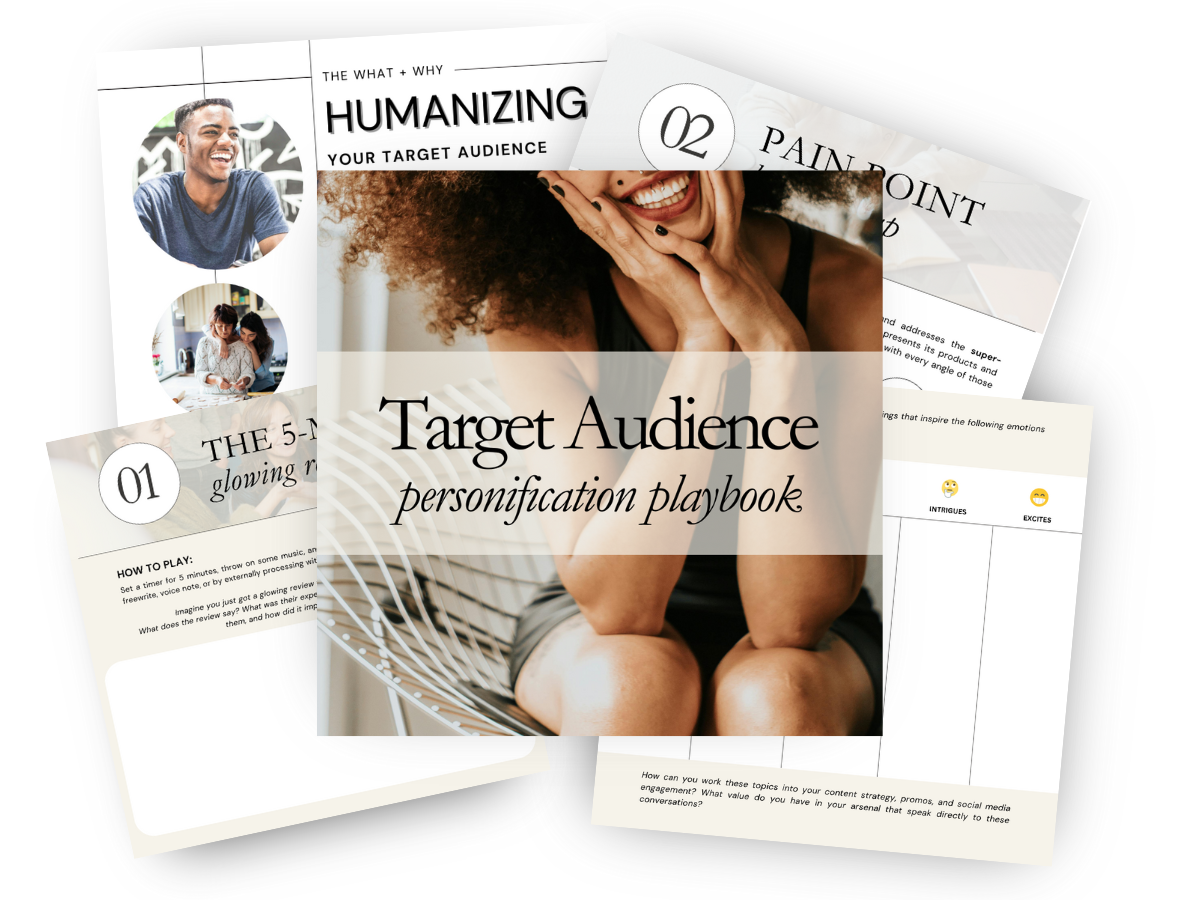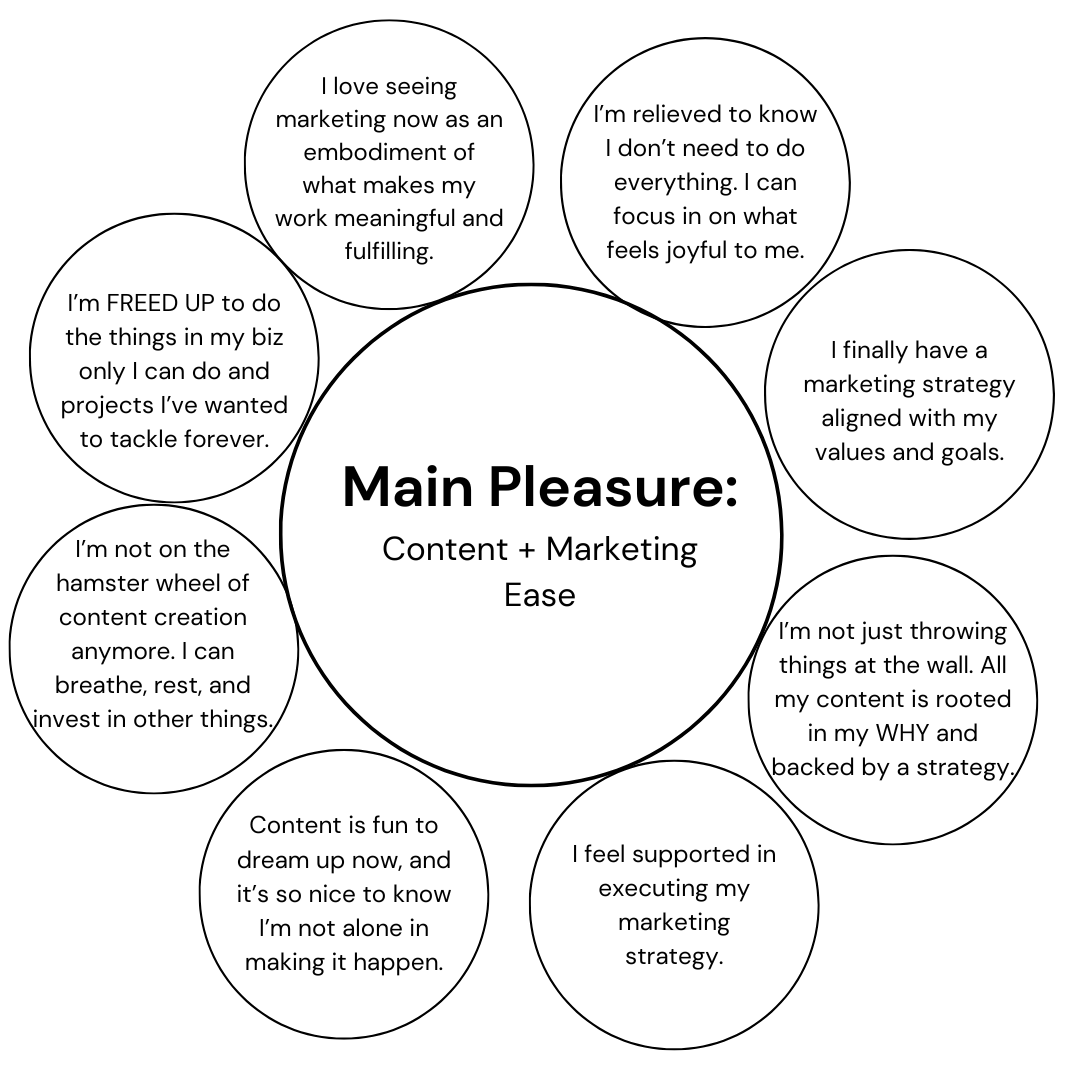Humanizing Your Business's Target Audience: Why It Matters and How to Do It
What’s a target audience?
A target audience is a marketing term that refers to the ideal group of individuals who need and desire what your business offers—your products and services, your business’s “why,” and the conversations your company sparks.
Your target audience is YOUR people. They’re a clearly defined group your business exists to connect with and serve.
Think of it like a clique in a stereotypical high school. There are microgroups of students separated by characteristics, interests, and outlooks. Your target audience is the group of classmates where your personified business feels most itself. It’s where the things your company stands for and talks about resonate with ease.
When you craft a clear, compelling, and genuine message about your business and what it offers, your target audience just gets it—they’re the group of kids you can walk right up to and join without hesitation.
Effective marketing is not about getting everyone to say yes to you; it’s about getting the right people to, and that’s where defining your target audience is essential.
(Free) Target Audience Personification Playbook
Use this playbook to get into the heads and hears of your target audience, learning what makes them tick and how you can craft your marketing with a human approach.
Why does a target audience matter?
“When you speak to everyone, you speak to no one.”
You can’t cater to everyone, and you shouldn’t try. Working to sell to the masses is a fool’s game that will leave your message convoluted and confused. And no one buys when they’re confused.
This is why crafting your marketing around a clearly defined and humanized audience is critical to creating a strategy that actually gets your business where you want it to be.
Marketing is about empathizing and compelling with emotion. An effective business acknowledges, empathizes, and addresses the super-specific pain points of a super-specific group of people, then presents its products and services as the solution.
Humans like to buy from humans, so your marketing must relate to a deeply understood human pain point.
Knowing the pain points of someone you don’t take the time to learn is impossible. You have to understand who your business is talking to, what they care about, the obstacles they’re facing, and how to meet them where they’re at, speaking a language they understand.
How to find your target audience (the humanized way)
While demographics like age range, location, marital status, etc., are essential to defining your target audience and should be explored, they aren’t the only signifiers that matter. Diving into your target audience’s psychographics is where the rubber hits the road — their interests, tendencies, attitudes, and values — all the psychology-based, juicy details.
By diving into the psychographics of your target audience, you go from talking to a faceless mass of generalities to a humanized representation you can wrap your head and strategy around.
Here’s a humanized approach to painting in the tangible colors of your target audience:
1. Start in open mode with a 5-minute prompt
Set a timer for 5 minutes and play with the following prompt via free write, voice note, or by externally processing with a friend:
Imagine you just got a glowing review from a client/customer.
What does the review say? What was their experience? What issue did you solve for them, and how did it improve their life?
When the five minutes are up, read, listen, or have your friend recap your review back to you.
In putting yourself in the shoes of your satisfied customer, what resonates? What pulls an emotional string in you? Who is the person your subconscious dreamt up, what were they struggling with before they found you, and how do they feel now?
Highlight the details that stick out, and keep this image in mind as you move on.
2. Use a bubble map to explore the pain and pleasure points of your target audience
First, pull out a piece of paper and a pen. By hand, trace a circle and write your business's primary pain point. For example, my main pain point is “Content and marketing overwhelm.”
After identifying your overarching pain point in the center circle, draw micro bubbles surrounding it. In these micro bubbles, put yourself in the mindset of an individual dealing with the central struggle and explore the thoughts they’re likely experiencing.
Have a look at the following example:
Putting yourself in the head and thoughts of your ideal client helps you empathize more deeply with their pain.
By imagining your target audience as a flesh-and-blood person with real thoughts and feelings, you’re equipped to identify the shared points where you can relate, market, and connect on a human level.
Your target audience wants more than just the solution your business offers; they want how that solution will make them feel.
Next, complete the same steps for your main pleasure point — the overarching benefit of your services and products.
Have a look at the following example.
Just as important as understanding your target audience’s pain points, it’s vital to brainstorm what also lights them up.
Going back to that glowing review you dreamt up, explore the thoughts your ideal client or customer experiences after investing in your products or services.
What thoughts roll through their mind when they feel the positive emotions your solutions create? What’s relieved in their lives now? What’s improved? How does your main pleasure point change their world?
Finally, as you look back at your two bubble maps, consider the industries, circles, and categories where these thoughts are prevalent.
For instance, solopreneurs, small business owners, creatives, and online businesses that rely on digital marketing and content creation as their main drivers of advertising are the groups in which the thoughts I brainstormed would most likely fall.
Use the picture you’ve gathered to guide your demographic research. Explore the places your target audience would go for solutions related to what your business offers. Is it a platform? Are they Googling their way there? Do they follow industry influencers for guidance?
Dip your toes in the spaces you suspect your target audience may be seeking help and do a little detective work to determine the typical age, gender, occupation, income level, location, etc., of the individuals with the questions your business answers.




